Winterizing Fruit Trees: Tips On Fruit Tree Care In Winter
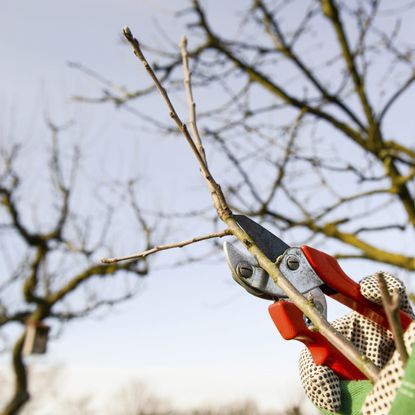

When gardeners think about fruit tree care in winter, their thoughts often turn to chemical spray solutions. Yet, for many fruit tree diseases – including peach leaf curl, apricot freckle, brown rot, – prevention is easier to accomplish and costs less than a cure. Just a few well-timed and well-chosen sprays can do a lot toward controlling fruit tree problems. Read on for information about how to care for fruit trees in the winter and winterizing fruit trees.
Winterizing Fruit Trees
If you want to know how to care for fruit trees in the winter, think of prevention. You can avoid many problems if you buy fruit tree varieties that are resistant to the worst species of disease. It’s also important to give your trees proper attention and care. One good step toward preventing diseases and infestations in your fruit trees in winter is a good autumn cleanup of the orchard. As part of your winter treatment for fruit trees, remove any dropped, rotting fruit as well as remaining fruit on the trees. Rake up fallen leaves as well, since they can be harboring insect pests. You can also prevent or limit fruit tree diseases by pruning correctly in winter. You’ll need to sterilize the pruners before use with denatured alcohol. Most fruit trees are deciduous and drop their leaves in winter. These trees are best pruned while they are dormant, after the leaves have fallen, generally between December and early February. However, members of the apricot family should be pruned in August to prevent Eutypa infection. When you are pruning, your first step is to remove dead, dying, or diseased branches. Also, trim out branches that grow straight up and root suckers. If you notice disease in the tree, be sure to prune the tree enough to eradicate the disease. With fruit trees, the risk is not inviting a new infection by pruning, but by failing to remove all diseased wood. Look for the lowest edge of the visible infection in a tree branch, trace the branch back to where it attaches, then cut at the next branch juncture down. This removes both the infected branch and the branch attached to it.
Fruit Tree Care in Winter
After winter pruning, your winter treatment of fruit trees continues with spraying in order to control pests and diseases. Dormant oil sprays are not toxic to humans or pets, but they work wonders on apples, plums, and pear trees that had leaf curl caused by aphids. The dormant spray suffocates insects on the trees. You can also use dormant oil sprays to combat scale insects on fruit trees. For citrus trees with aphid, scale, or mealybug infections, use summer oil instead, as dormant oil may injure the citrus leaves. You’ll have to use copper fungicide sprays on peach trees and nectarine trees that had leaf curl disease the prior summer.
Gardening tips, videos, info and more delivered right to your inbox!
Sign up for the Gardening Know How newsletter today and receive a free download of our most popular eBook "How to Grow Delicious Tomatoes."

Teo Spengler has been gardening for 30 years. She is a docent at the San Francisco Botanical Garden. Her passion is trees, 250 of which she has planted on her land in France.
-
 Want a Backyard Mini Orchard? Create Your Own Container Orchard
Want a Backyard Mini Orchard? Create Your Own Container OrchardEasier to care for in small spaces, a backyard mini-orchard makes sense for busy gardeners and juicy fruit is the reward.
By Teo Spengler
-
 Urban Beekeeping Guide: Top Tips For Raising Bees In The City
Urban Beekeeping Guide: Top Tips For Raising Bees In The CityUrban beekeeping can be a rewarding and appreciated pastime, but first be sure it’s legal in your city and learn the ropes of beekeeping.
By Mary Ellen Ellis
-
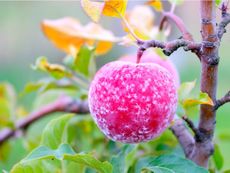 How To Protect Fruit Trees From Frost And Freeze
How To Protect Fruit Trees From Frost And FreezeChoosing fruit trees appropriate for your growing zone is best, but you still may need to protect them from extreme cold. Read how.
By Bonnie L. Grant
-
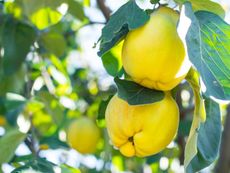 Best Plants For Late Summer and Fall Fruit Harvest
Best Plants For Late Summer and Fall Fruit HarvestEven if you don’t have the optimal conditions for more common fruit trees, there are other end of summer fruits to enjoy.
By Teo Spengler
-
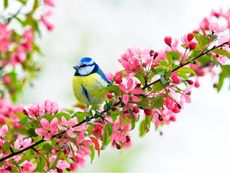 Best Native Fruit Trees To Support Wildlife
Best Native Fruit Trees To Support WildlifeIf you want trees that will attract and feed wildlife, learn the best kinds of edible fruit and nut trees to plant for inviting specific creatures.
By Teo Spengler
-
 Orange Fruit Varieties: Growing Fruits That Are Orange
Orange Fruit Varieties: Growing Fruits That Are OrangeOrange colored fruit isn’t limited to the citrus orange. There are plenty of other orange colored fruit varieties, each packing a healthful punch. Read on for more.
By Amy Grant
-
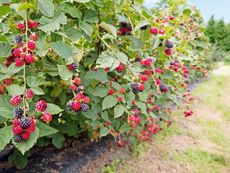 Everbearing Plants: Learn About Everbearing Varieties Of Fruit
Everbearing Plants: Learn About Everbearing Varieties Of FruitWhat does everbearing mean? And more importantly, how do everbearing varieties differ from non-everbearing types? Read on for more.
By Laura Miller
-
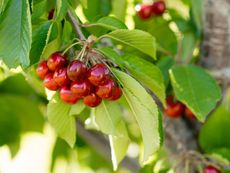 Plant A Red Fruit Garden: Growing Fruits With Red Flesh
Plant A Red Fruit Garden: Growing Fruits With Red FleshPlanting a red fruit garden may seem a bit whimsical. That is, until you realize the health benefits of consuming fruits with red flesh.
By Laura Miller
-
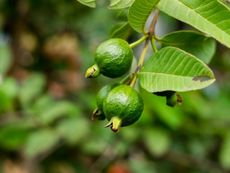 Heat Tolerant Fruits - Growing Fruit In Hot Weather
Heat Tolerant Fruits - Growing Fruit In Hot WeatherSome fruit grows in extreme heat naturally. But there are also specially cultivated, heat-tolerant varieties. For more information on heat tolerant fruits, read on.
By Teo Spengler
-
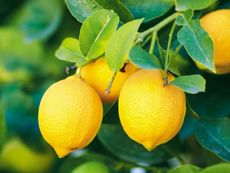 Yellow Fruit Varieties - Growing Fruit That Is Yellow
Yellow Fruit Varieties - Growing Fruit That Is YellowWhat fruit is yellow? There's more than the bananas at the supermarket. Try growing yellow fruit for a consistent supply of sunny food.
By Bonnie L. Grant